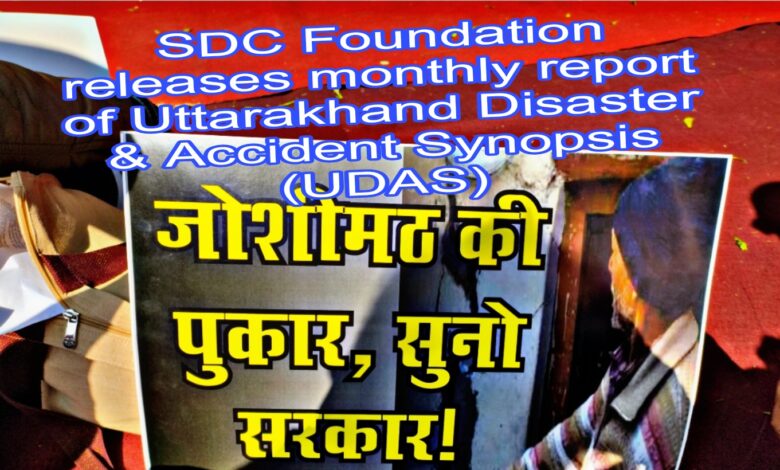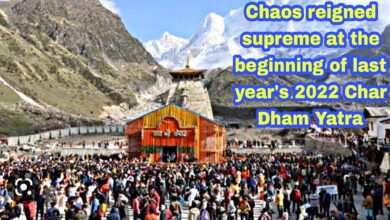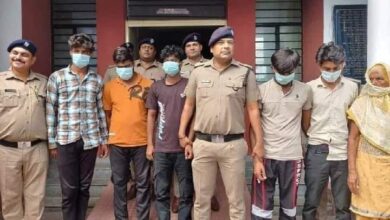SDC Foundation releases monthly report of Uttarakhand Disaster & Accident Synopsis (UDAS)

Dehradun
Dehradun-based think tank SDC Foundation releases reports on major natural calamities and accidents in Uttarakhand every month. In this sequence, SDC has released its fourth report so far and the first of this year for the month of January 2023. According to SDC Founder Anoop Nautiyal, the purpose of the Uttarakhand Disaster & Accident Synopsis (UDAS) Report is the documentation and compilation of major disasters and accidents that occur in Uttarakhand throughout the month. The report is mainly based on news reports published in credible Hindi and English newspapers and local news portals.
Uttarakhand UDAS January 2023
According to the Anoop Nautiyal, founder SDC quoting the Uttarakhand Disaster & Accident Synopsis (UDAS) Report , there was no large-scale disaster or accident in the state in January 2023 that took place on a particular day in which there was a loss of life and property. The January 2023 report is largely based on the land subsidence in Joshimath. Apart from this, the report also cites earthquake tremors and avalanches in the Chamoli district.
The most important thing about UDAS’s January 2023 report is that it has provided daily date-wise information about the events that took place pertaining to the Joshimath land subsidence in January. An attempt has been made in the report to touch every aspect of the Joshimath situation. It also mentions the specific condition of cracks in the land, houses and roads along with the problems faced by the people of the region. The report cites the government’s efforts to provide relief to the people in Joshimath. Apart from this, the UDAS report also elaborates on the ongoing government and scientific surveys and the continuous water leakage in Jaypee Colony just below Joshimath.
Major events of Joshimath have been recorded date wise in the UDAS report in the month of January. For example, on January 1st, Chief Minister Pushkar Singh Dhami sought detailed information from Chamoli’s DM Himanshu Khurana, while on January 2nd, the people of Joshimath held a press conference in Dehradun and alleged that the main reason for the subsidence in Joshimath was the 20 km long NTPC Tapovan-Vishnugad hydropower project. Along with this, the report provides date-wise details of the street protests of the people in Joshimath and the steps taken by the state government as a response.
The report focuses not only on the incident of aquifer bursting in Jaypee Colony but also the amount of water discharged from here from the first day to the next several days. The report quotes residents of Joshimath, voicing their frustration that the steps taken by the government are simply not enough. The first glimpse of cracks in Joshimath were observed in 2021 – had the government listened and been pro-active at that time, this situation would not have come today. Quoting scientists from the Wadia Institute of Geology, Dehradun, UDAS reports that the rate of land subsidence is double in Joshimath. In the report, incidents of land subsidence have also been mentioned in Karanprayag of Chamoli district, Atali village of Tehri etc.
The UDAS Report quotes environmentalist Prof. Ravi Chopra, who says that there are enough reasons to believe that the NTPC tunnel is the main reason for the landslide in Joshimath. Various announcements made by the state government such as that of interim assistance and relief of Rs 1.5 lakh to each family affected by land subsidence, Rs 5000 rent per month, Rs 450 per day for food in relief camps, relief on water and electricity have also been mentioned.
Uttarakhand Disaster Management
Anoop Nautiyal hopes the Uttarakhand UDAS Monthly Report will be helpful for the political leadership, policy makers, officials, researchers, educational institutions, civil society organisations and media houses. Along with hopefully being an impetus for change, it can also be studied to develop state policies for the reduction of losses due to accidents and disasters in Uttarakhand.
Odisha Model of Disaster Management
Uttarakhand is a highly ecologically sensitive state from the point of view of disasters and natural calamities. Scientists have been continuously raising the possibility of large-scale landslides and earthquakes in the near future. In such a situation, there is a dire need to strengthen the disaster management system, especially in the mountainous region of the state.
Anoop Nautiyal expects that the state government in Uttarakhand will study and adopt the Odisha model for disaster management, a model that has also been praised by the United Nations. The Odisha model offers important lessons on strengthening disaster risk governance, investing in preparedness and scenario planning, and spreading greater understanding of disaster risk.







SDC Foundation’s report on the Uttarakhand disaster is thoughtful. T